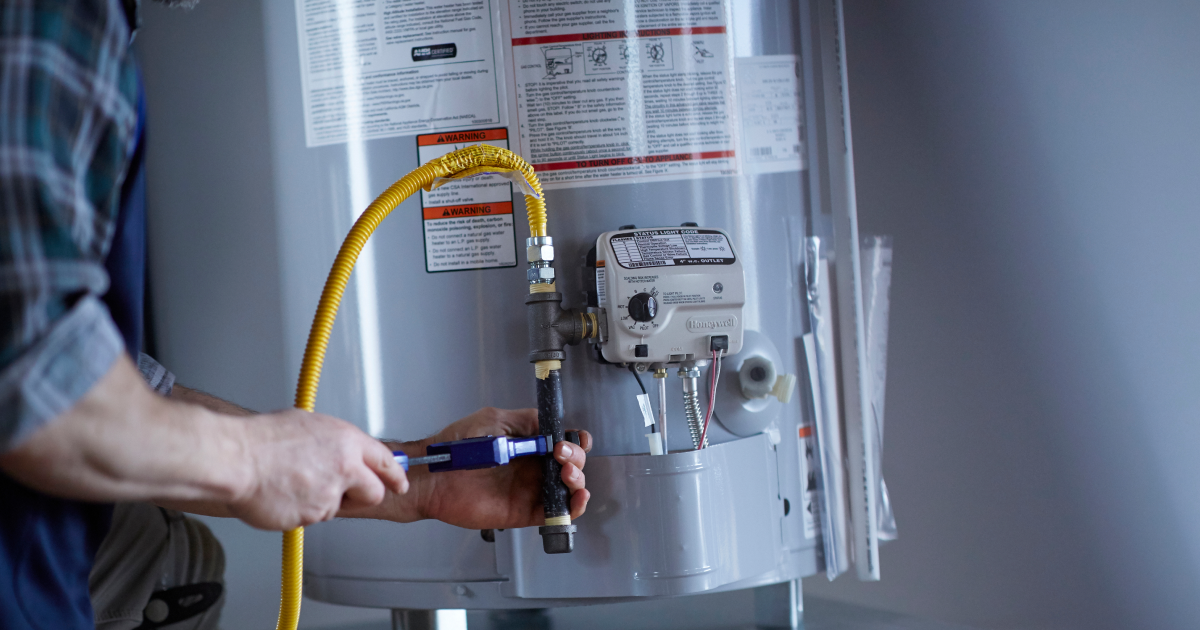How do you actually feel when it comes to How to Maintain a Hot Water Heater in a Few Simple Steps?

Hot water is necessary for day-to-day convenience, whether it's for a refreshing shower or cleaning meals. To ensure your warm water system runs effectively and lasts much longer, normal maintenance is key. This post provides useful suggestions and understandings on just how to maintain your home's hot water system to prevent disruptions and pricey repair services.
Introduction
Keeping your home's hot water system could seem daunting, but with a couple of easy steps, you can guarantee it operates efficiently for years ahead. This guide covers every little thing from understanding your warm water system to DIY upkeep tips and recognizing when to hire professional aid.
Significance of Keeping Your Hot Water System
Routine upkeep not only expands the lifespan of your hot water system however also ensures it runs efficiently. Overlooking upkeep can lead to reduced effectiveness, greater power costs, and also early failing of the system.
Indications Your Hot Water System Requirements Upkeep
Recognizing when your hot water system requires focus can protect against significant concerns. Watch out for indicators such as irregular water temperature, weird sounds from the heating unit, or corroded water.
Recognizing Your Hot Water System
Prior to diving right into maintenance tasks, it's helpful to recognize the fundamental elements of your hot water system. Typically, this includes the hot water heater itself, pipes, anode poles, and temperature controls.
Regular Monthly Upkeep Tasks
Routine month-to-month checks can help catch small concerns before they intensify.
Purging the Water Heater
Purging your hot water heater removes sediment accumulation, boosting performance and prolonging its life.
Checking and Replacing Anode Rods
Anode poles protect against deterioration inside the container. Checking and changing them when worn is vital.
Checking and Changing Temperature Settings
Adjusting the temperature setups makes certain optimum efficiency and security.
DIY Tips for Maintenance
You can execute a number of maintenance jobs yourself to maintain your warm water system in top problem.
Checking for Leakages
On a regular basis inspect pipes and links for leaks, as these can lead to water damages and higher costs.
Evaluating Stress Relief Valves
Testing the stress relief valve guarantees it functions appropriately and avoids excessive stress build-up.
Insulating Pipes
Protecting hot water pipelines lowers warmth loss and can save energy.
When to Call an Expert
While do it yourself maintenance is useful, some issues need specialist proficiency.
Facility Issues Needing Expert Aid
Instances include major leaks, electric troubles, or if your water heater is consistently underperforming.
Routine Expert Maintenance Perks
Expert upkeep can consist of complete evaluations, tune-ups, and making certain conformity with safety and security criteria.
Final thought
Routine upkeep of your home's warm water system is necessary for efficiency, durability, and price financial savings. By following these tips and knowing when to look for expert assistance, you can guarantee a dependable supply of hot water without unanticipated disruptions.
How to Maintain an Instant Hot Water Heater
Before tinkering with your hot water heater, make sure that it’s not powered on. You also have to turn off the main circuit breaker and shut off the main gas line to prevent accidents. Also turn off the water valves connected to your unit to prevent water from flowing into and out of the appliance. 2. When you’re done, you have to detach the purge valves’ caps. These look like the letter “T†and are situated on either side of the water valves. Doing so will release any pressure that has accumulated inside the valves while at the same time avoid hot water from shooting out and burning your skin. 3. When the purge valves’ caps are removed, you have to connect your hosing lines to the valves. Your unit should have come with three hoses but if it didn’t, you can purchase these things from any hardware or home repair shops. You can also get them from retail stores that sell water heating systems. Read the user’s manual and follow it to complete this task properly. When the hosing lines are connected, open the purge port’s valves. 4. You should never use harsh chemical cleaners or solutions when cleaning your unit. Make use of white vinegar instead. It should be undiluted and you’ll probably use about 2 gallons. 5. Now flush your water heater. This task should probably take about 40 minutes. We can’t give you specific directions for this because the procedure is carried out depending on the type, model and brand of your heater. With that being said, refer to the user’s manual. 6. When you’re done draining the unit, you have to turn off the purge port valves again. Remove the hosing lines that you earlier installed on each of the water valves. Put the valve caps (purge port) back in their respective places and be very careful so as not to damage the rubber discs that are found inside these caps. 7. Now that everything’s back in place, check your user’s manual again to find out how to reactivate your water heating system. 8. Once it is working, turn one of your hot water faucets on just to let air pass through the heater’s water supply pipes. Leave the tap on until water flows smoothly out of it. https://www.orrplumbing.com/blog/2014/september/how-to-maintain-an-instant-hot-water-heater/

Do you appreciate reading about Tips on Maintaining a Water Heater? Put feedback below. We will be glad to find out your insights about this piece. Hoping that you come back again in the future. Loved our post? Please share it. Help another person locate it. Thanks for going through it.
Book Service